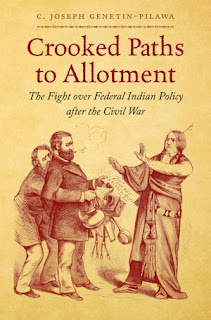 Walking Guide to the Eternal City (IBTauris) guides visitors step by step through the historic areas and eras of Rome.
Walking Guide to the Eternal City (IBTauris) guides visitors step by step through the historic areas and eras of Rome.He applied the “Page 99 Test” to his latest book, Death: Antiquity and Its Legacy, and reported the following:
The Pyramid of Gaius Cestius (18- 12 BCE) is unique among surviving monuments from ancient Rome. As a funerary monument, it commemorates where Cestius is buried but its form owes to the "Egyptomania" introduced by the emperor Augustus following his victory over Mark Antony and Cleopatra at the Battle of Actium in 31 BCE. Egyptian monuments included two obelisks that Augustus transported from Egypt - one for the Circus Maximus and the other that served as the sundial of the Horologium in his Mausoleum complex.Learn more about Death: Antiquity and Its Legacy at the Oxford University Press website.
That was just the beginning of the Pyramid's interesting history. It was incorporated into the Aurelianic Walls and despite its unmistakable pagan form and function, it survived the destruction of ancient monuments that supplied building materials in the medieval period and that later made the architectural masterpieces of the Renaissance and Baroque possible. It was known as the "Meta Remi", the Tomb of Remus, the brother of Rome's legendary founder Romulus and the counterpart of a pyramid that stood near St. Peter's Square that was known as the "Meta Romuli", the Tomb of Romulus that was demolished in 1499. Yet another pyramid tomb was at the start of Via del Corso in Piazza del Popolo that was demolished for the construction of the church of S. Maria dei Miracoli. The demolition of this last pyramid is ironic since the Piazza would be transformed into a Neoclassical showpiece by Giuseppe Valadier (1816-20) with an Egyptian obelisk at its centre - the very obelisk that Augustus had erected in the Circus Maximus. The Pyramid of Cestius however, as sole survivor, influenced the funerary monument designs of the Neoclassical sculptor Antonio Canova.
Page 99 follows the Pyramid's "reuse" as a funerary marker for visitors on the Grand Tour to indicate the burial place of the English Romantic poets John Keats and Percy Bysshe Shelley in the Protestant Cemetery. The poem "Rome at the Pyramid of Cestius near the Graves of Shelley and Keats (1901) by Thomas Hardy prioritizes the Pyramid's commemorative role:
Who, then, was Cestius,Today, the Pyramid lends its name to the Piramide Metro Station outside Porta S. Paolo that connects travelers to the trains that go to Ostia Lido, the beaches south of Rome, away from the city centre and its storied past of which the Pyramid has played a unique part.
And what is he to me? -
Amid thick thoughts and memories multitudinous
One thought alone brings he.
I can recall no word
Of anything he did;
For me he is a man who died and was interred
To leave a pyramid
Whose purpose was exprest
Not with its first design,
Nor till, far down in Time, beside it found their rest
Two countrymen of mine.
Cestius in life, maybe,
Slew, breathed out threatening;
I know not. This I know: in death all silently
He does a finer thing,
In beckoning pilgrim feet
With marble finger high
To where, by shadowy wall and history-haunted street,
Those matchless singers lie...
- Say, then, he lived and died
That stones which bear his name
Should mark, through Time, where two immortal Shades abide;
It is an ample fame.
--Marshal Zeringue

























